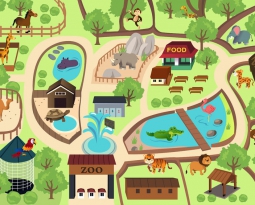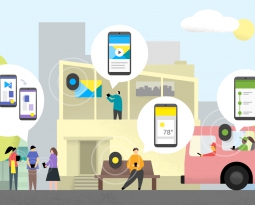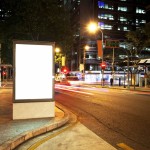Beacons and geofencing seem to have near-identical applications in the realm of proximity marketing, but the way the technologies work and their subsequent practical uses become quite different. To help you better understand the differences between the technology and how your marketing team might apply one or the other to best meet their goals, read on.
How Geofencing Works
Geofencing technology recognizes a mobile device user’s GPS coordinates to follow a certain set of rules when the customer enters a preset geographical area. Developers create a perimeter on a map where the geofencing features will activate.
For instance, they can draw a circle radius around a retail location of about a half mile so that loyalty customers driving by can receive message notifications about a sale going on in the store that day. Other geofencing capabilities include syncing with smart home devices like the Nest thermostat to turn on the AC when the device owner comes within five miles of their home. That way, they can arrive to a house that is nice and cool without having to waste energy.
The boundaries drawn for geofencing do not have to be a circle, either. Geometric shapes can be drawn, such as the outer footprint of a mall or a square surrounding a downtown block.
How Beacons Work
Beacons are battery-operated devices that send Bluetooth low energy (BLE) signals in the form of a tiny data packet. In fact, the data packet is so small that all it contains are several digits that reveal the beacon owner and the specific beacon.
What makes beacon technology so exciting is that when this unique code is received by a beacon-enabled app, a set of highly-specific rules can be enacted. For instance, when a customer enters a home theater display room, the beacon could dim the lights and reset an impressive video clip of the latest Hollywood blockbuster to show off the experience that product package can provide. A customer can also receive a targeted offer when they walk by an aisle-end display that delivers more information about the products and perhaps a promotional discount.
Beacon ranges can be set within certain distances, but they tend to be between 50 meters and a few inches.
Which One Is Better for What?
As you can see, the capabilities of both technologies is quite similar, but with several important key differences. First, geofencing is much less precise of a proximity detector. Users may have a variable experience of when exactly the triggered action occurs after they enter the geofence perimeter. This makes geofencing more effective for broader marketing aims that track customers on a larger scale, such as when they are driving around or are outdoors in general.
Beacons can detect customers with much greater accuracy, making them better for use indoors and with certain displays. As an example, beacons can be used to deliver more precise turn-by-turn directions within a building whereas the GPS function of geofencing would be far less useful on the “footsteps” scale.
Another difference is that geofencing can require an expensive investment since developers will have to “borrow” a satellite and utilize a sophisticated recognition system to keep everything in place. Beacon developers only have to have an app that reacts to BLE signals, which is less complex and requires less of an investment.
In the end, both geofencing and beacon platforms can accomplish marketing goals for a brand, but beacons low cost of entry and more precise capabilities make it a more agile solution that can closer meet the needs of an indoor retail-based proximity marketing campaign.
Discover more about beacons and the potential they can hold for your brand by visiting Digital Social Retail’s digital convergence platform product page.










